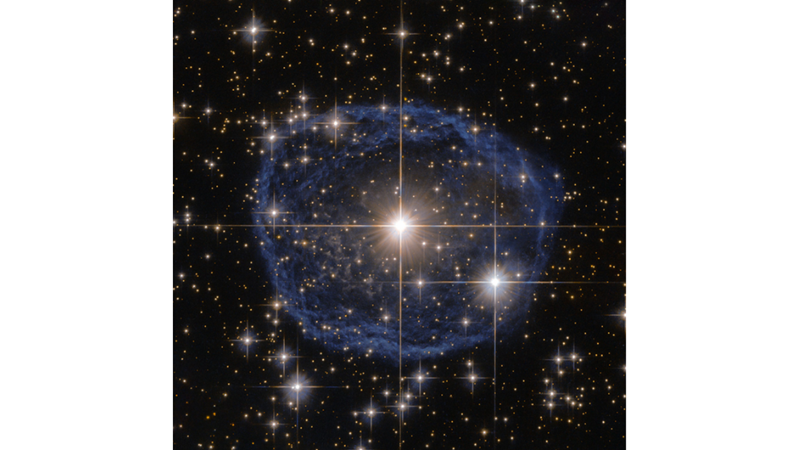The star shining in the centre is a Wolf-Rayet star, WR 31a, in the constellation Carina (The Backbone), about 30,000 light years from us. This type of star was named after Charles Wolf and Georges Rayet, the astronomers who first discovered them. Wolf-Rayet stars are known for their extremely hot and massive nature; some can be 20 times more massive than the Sun! However, their lifetimes are very short on a cosmic scale, only a few hundred thousand years. In the timeline of the universe, this is almost as short as the blink of an eye.
Wolf-Rayet stars usually lose half their mass in as little as 100,000 years, and WR 31a follows this rule. At the end of its life, this star will explode as a spectacular supernova, and the stellar material it scatters around will contribute to the formation of new stars and planets.
The blue bubble seen around WR 31a and its unnamed companion star is a Wolf-Rayet nebula. Such nebulae are usually round or ring-shaped and are clouds of gas and dust formed when fast stellar winds interact with the hydrogen in the outer layers of Wolf-Rayet stars.
Image description:
A dark blue dust ring revolves around two bright stars with large diffraction spikes. Inside and outside the blue circle, stars of different sizes punctuate the darkness of space.
Credit: ESA/Hubble & NASA, Acknowledgement: Judy Schmidt


 Nielawore
Nielawore









Yorum yazmak için lütfen giriş yapınız